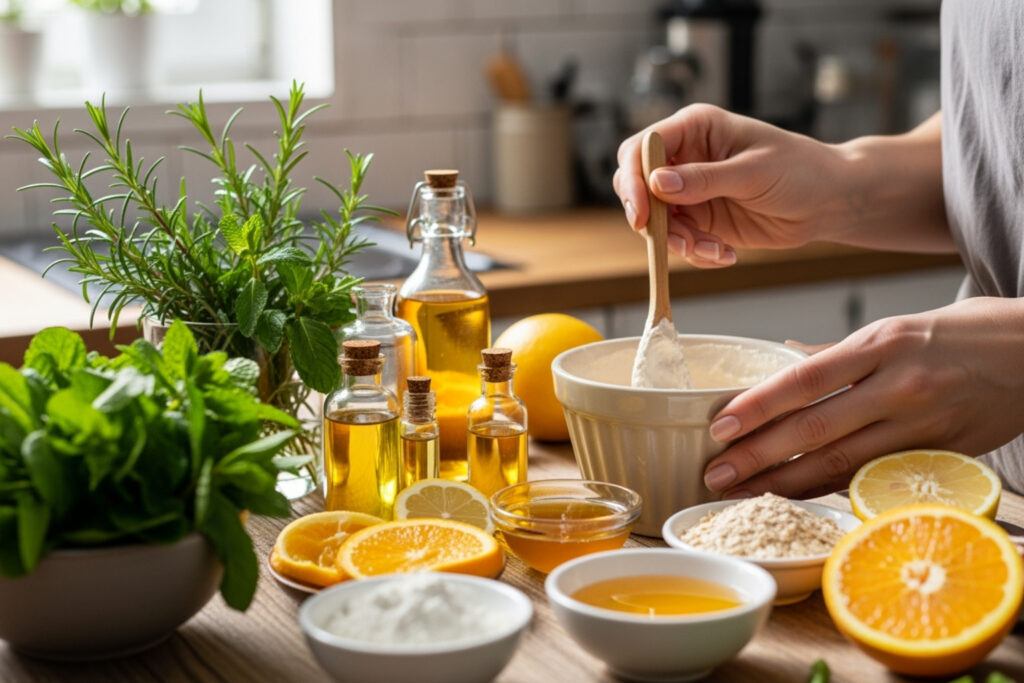Your Kitchen, Your Beauty Lab
DIY natural beauty has transformed from a niche hobby into a powerful movement, with its global market projected to reach 19.5 billion dollars by 2027. Over half of consumers now create their own beauty products at home, driven by concerns about synthetic ingredients and the desire for transparency.
Quick DIY Natural Beauty Benefits:
- Complete ingredient control – know exactly what’s going on your skin
- Cost savings – basic recipes cost 70-80 percent less than store-bought equivalents
- Zero waste – eliminate plastic packaging and reduce environmental impact
- Custom formulation – tailor products to your specific skin needs
- Freshness guarantee – create small batches without preservatives
As one enthusiast said after watching the documentary “Stink”: “My sister and I can not help but make ALL the things to replace your everyday beauty items!” This captures the excitement many feel when they realize their kitchen holds the secret to healthy, vibrant skin.
The clean beauty movement has opened our eyes to questionable ingredients in conventional products. Commercial formulations often contain preservatives and synthetic fragrances that can cause irritation, while natural ingredients like honey, oatmeal, and avocado offer proven benefits backed by centuries of use and modern research.
Your change into a DIY beauty alchemist starts with understanding that effective skincare doesn’t require complicated formulas or expensive ingredients. Simple combinations of kitchen staples can deliver results that rival high-end products – while giving you complete control over what touches your skin.
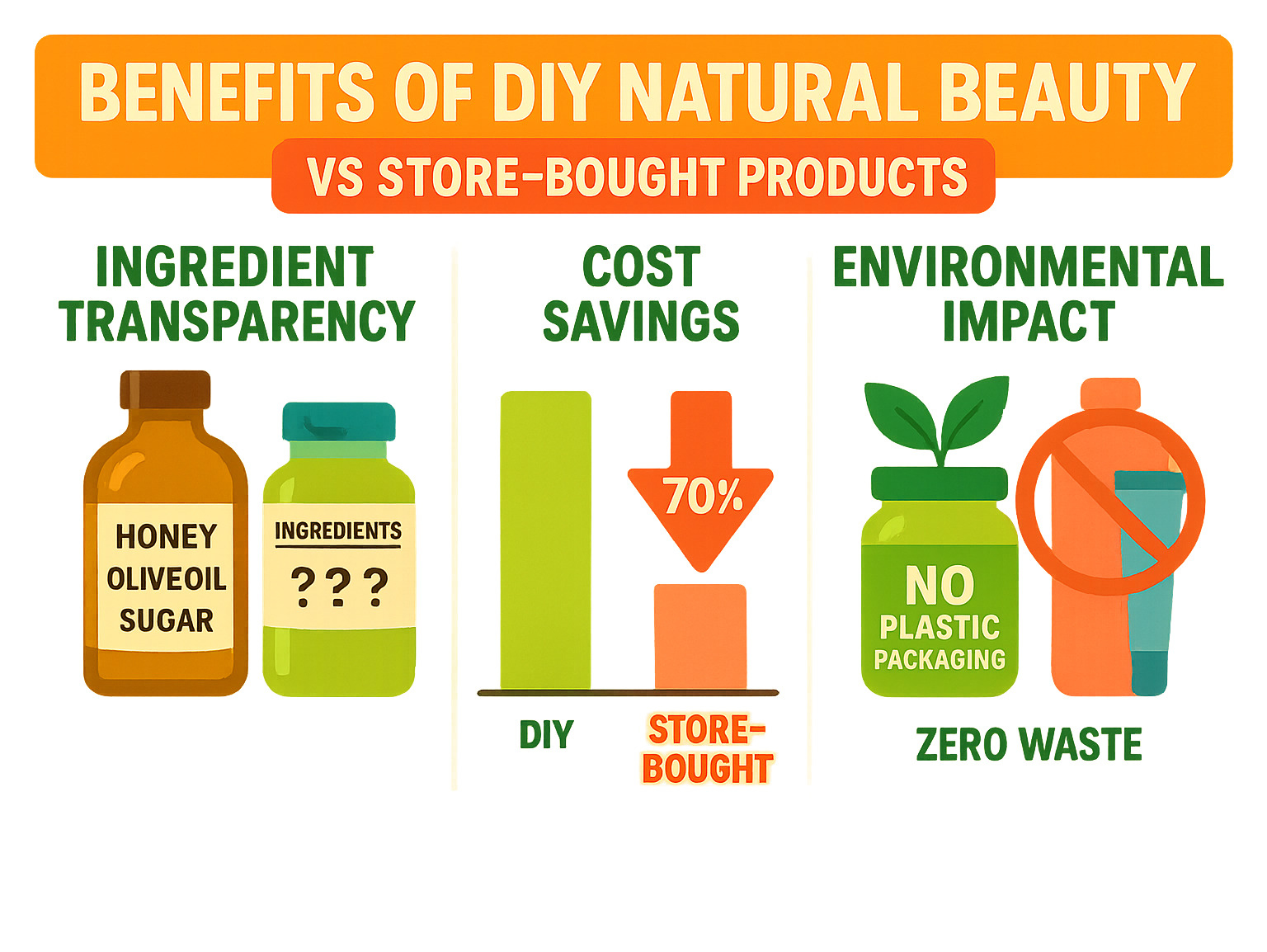
Related content about DIY natural beauty:
Why Choose DIY Natural Beauty?
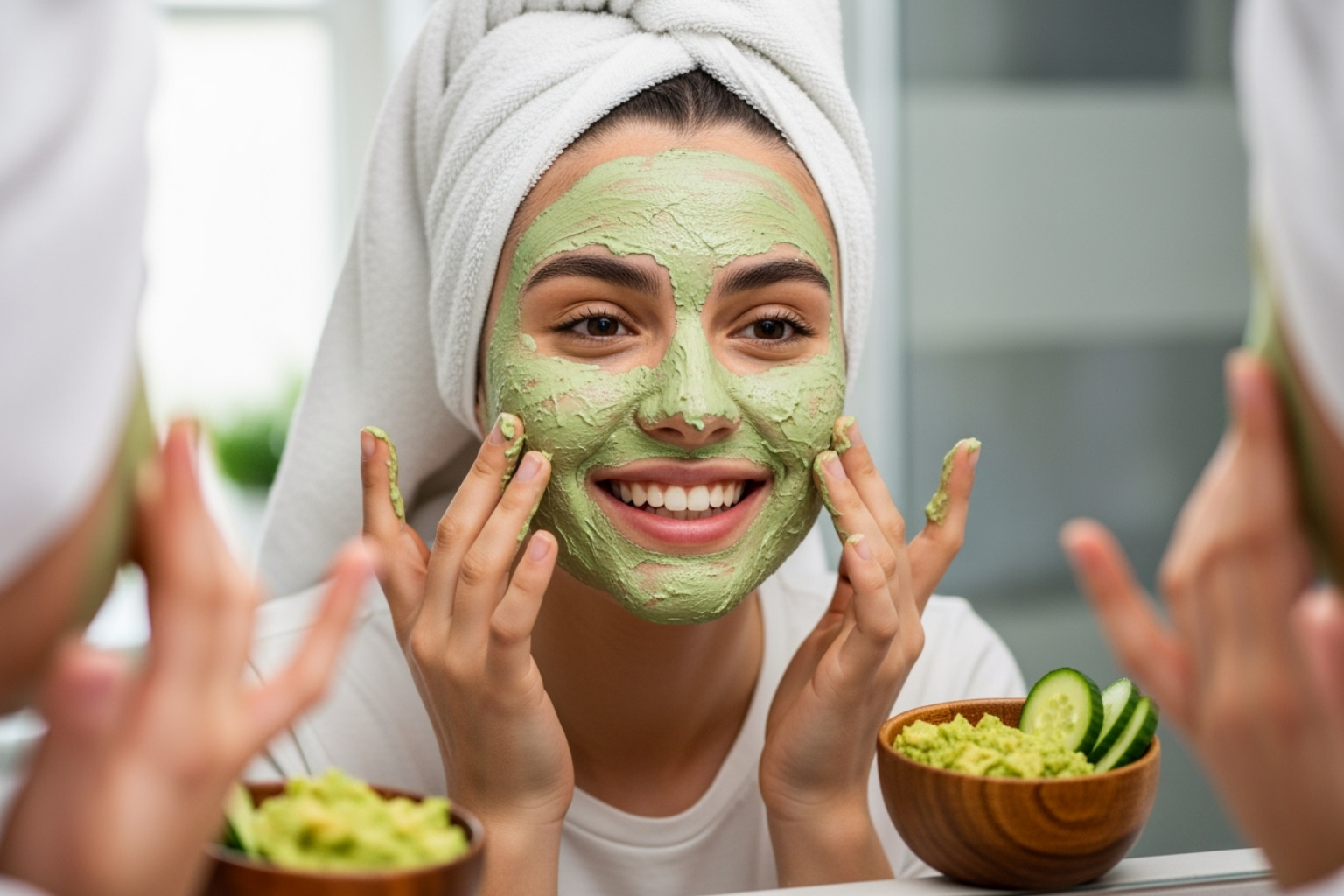
There’s something magical about mixing your first homemade face mask and realizing it works just as well as an expensive store-bought version. DIY natural beauty isn’t just a trend; it’s a return to simplicity that makes perfect sense once you understand the benefits.
The biggest game-changer? Complete ingredient transparency. When you make your own products, you know exactly what’s going on your skin. No more squinting at tiny labels trying to pronounce mysterious chemicals. As Christine Poblete-Lopez, MD, puts it, “If long ingredient lists concern or confuse you, a home remedy may be worth trying.” This transparency means you can avoid preservatives and synthetic fragrances that might be causing your skin to rebel.
Many store-bought products rely on harsh preservatives to sit on shelves for months. Your homemade creations don’t need these additives because you’re making fresh, small batches. This is especially true for oil-based recipes that naturally resist bacteria.
The cost-effectiveness of making your own beauty products is shocking. A jar of honey costs a few dollars and can make dozens of face masks, compared to a single high-end mask that costs the same. Your kitchen ingredients work overtime, creating multiple products for a fraction of the price.
Your planet will thank you too. Think about all those plastic bottles and tubes that pile up. When you accept DIY natural beauty, you’re dramatically reducing packaging waste. Glass jars from pasta sauce become perfect containers for your homemade scrubs and masks. It’s zero-waste beauty at its finest.
But here’s where it gets really exciting: customization for your skin type. Commercial products are made for millions, but your skin is unique. Too oily? Add some clay to your mask. Super sensitive? Stick to gentle oats and honey. You become your own skincare expert, adjusting recipes based on what your skin actually needs.
The beauty of this approach lies in its simplicity and effectiveness. You’re not just saving money or reducing waste – you’re taking control of your skincare routine in the most fundamental way.
Want to learn more about the science behind natural skincare? Check out Are Natural Skin Care Products Actually Better for Your Skin? for expert insights. And if you’re ready to dive deeper into creating your own products, our comprehensive guide More info about DIY Natural Skincare has everything you need to get started.
Simple Recipes for Beginners to Get Started
The beauty of DIY natural beauty is its simplicity. You don’t need a chemistry degree or expensive equipment to create effective skincare. Some of the most transformative treatments are hiding in your kitchen pantry.
Let’s start with three foolproof recipes that will give you confidence and show you just how easy it is to pamper your skin naturally. Each recipe uses ingredients you can pronounce and likely already own.
Soothing Oatmeal and Honey Face Mask
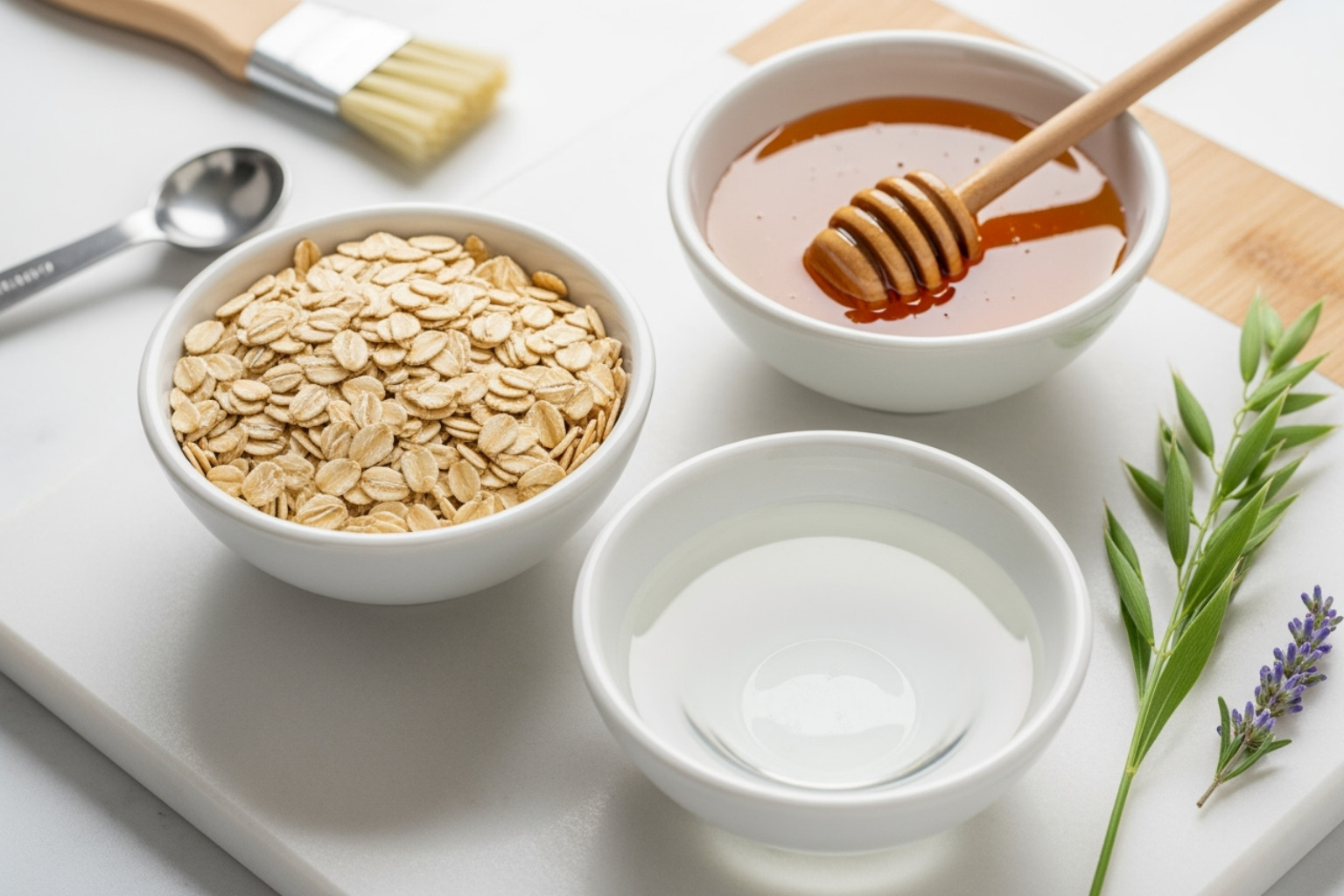
This gentle mask is perfect for stressed, cranky, or irritated skin. The combination will work wonders.
Oatmeal benefits go way beyond breakfast. When finely ground, oats become a powerhouse ingredient that soothes inflammation and helps your skin hold onto moisture. Scientific research on Colloidal Oatmeal shows it’s particularly effective for conditions like eczema, thanks to compounds called avenanthramides that calm irritation.
Honey’s humectant properties make it nature’s moisture magnet. Raw honey pulls water from the air directly into your skin while fighting bacteria naturally. It also has anti-inflammatory effects that help reduce redness and calm sensitive skin types.
Here’s what you’ll need: 2 tablespoons of finely ground oats (pulse regular oats in a blender), 1 tablespoon of raw honey, and 1-2 teaspoons of warm water.
Mix the ground oats with honey, then slowly add warm water until you get a spreadable paste. Apply to clean skin, avoiding your eye area, and relax for 15-20 minutes. When you rinse off with warm water, gently massage in circles for light exfoliation. Your skin will feel incredibly soft and calm.
This mask is suitable for sensitive skin and can be used weekly. For more inspiration, check out our collection of Homemade Face Masks for Clear Glowing Skin.
Exfoliating Coconut Oil and Sugar Body Scrub
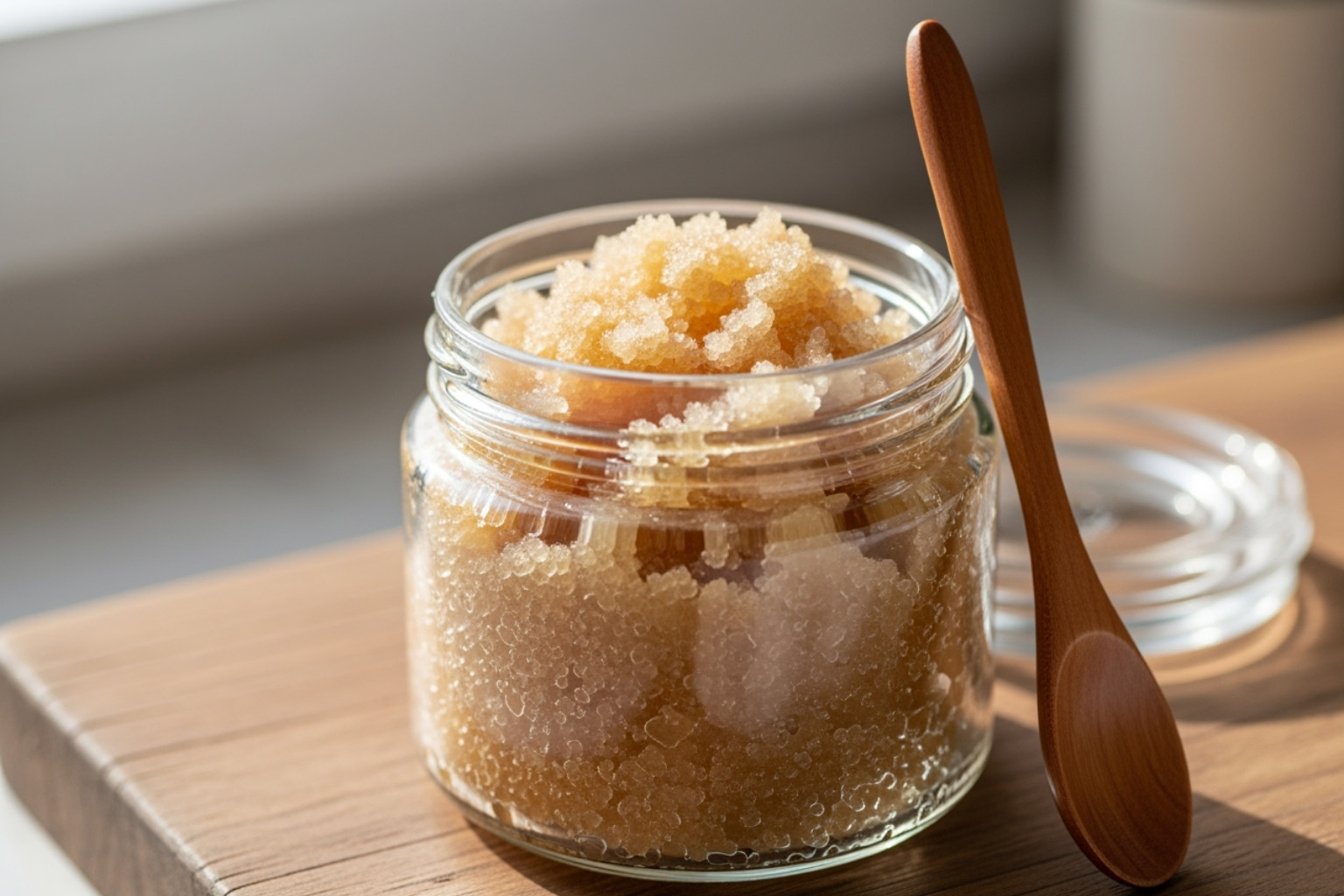
This simple scrub delivers silky smooth skin. The physical exfoliation from sugar crystals buffs away dull, dead skin cells while coconut oil provides deep moisture.
Brown sugar works beautifully because it’s gentler than white sugar and contains molasses for extra skin-softening benefits. Coconut oil moisturization has been treasured for centuries. It creates a protective barrier that leaves skin feeling soft without any greasy residue.
You’ll need just two ingredients: 1 cup of brown sugar and 1/2 cup of melted coconut oil (let it cool slightly before mixing). Stir them together until the sugar is completely coated, then store in a glass jar.
How to use in the shower: Apply to damp skin and gently massage in circular motions, starting from your feet and working upward. Pay special attention to rough spots like elbows and knees. Rinse thoroughly with warm water and pat dry. Your skin will feel amazingly smooth.
Remember to avoid using this scrub on your face, as the sugar granules are too harsh for delicate facial skin. For more insights on coconut oil’s benefits, read Should You Use Coconut Oil on Your Skin?. If you love the scrub concept, try our DIY Sugar Lip Scrub with Coconut Oil for silky lips too.
Nourishing Avocado Hair Mask
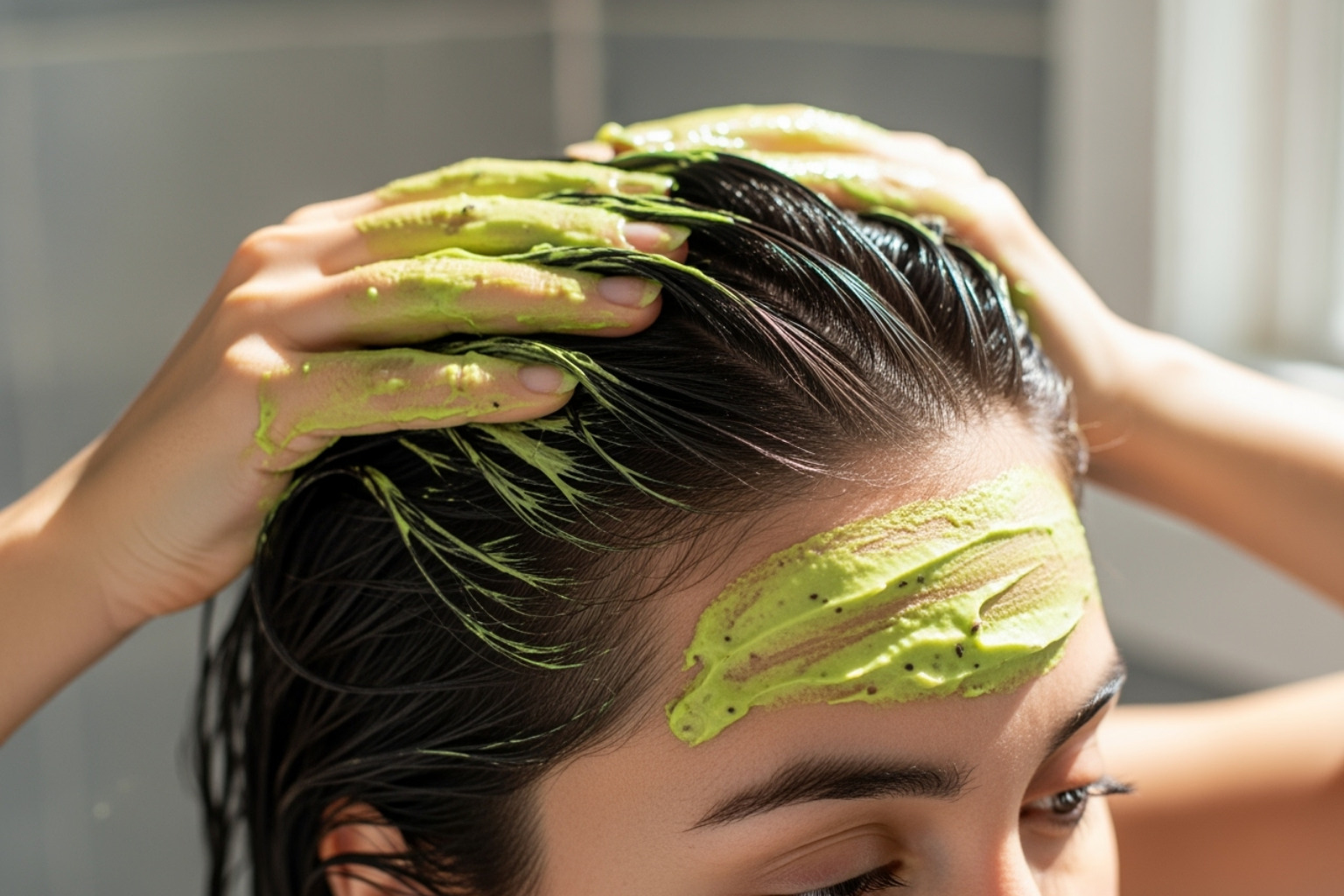
Your hair deserves natural love too. This deep conditioning treatment transforms dry, lifeless locks into shiny, healthy hair using edible ingredients.
Avocado’s fatty acids provide intense nourishment. This green superfood is packed with vitamins E and C, healthy fats, and antioxidants that strengthen hair. Research in the Journal of Cosmetic Dermatology study on Avocado confirms its remarkable benefits for skin and hair health.
Olive oil for shine adds the perfect finishing touch. This ancient beauty secret contains vitamin E and squalene, which help repair damaged strands while adding gorgeous natural luster.
Mash one ripe avocado until completely smooth (no lumps!), then mix in 1-2 tablespoons of olive oil. For extra moisture, add a tablespoon of raw honey.
How to apply and rinse: Start with damp, freshly shampooed hair. Work the mask from roots to ends, making sure every strand is coated. Pop on a shower cap, then relax for 20-30 minutes. Rinse thoroughly with cool water until all traces are gone. You might skip conditioner – the mask provides plenty of moisture on its own.
These three recipes prove that effective DIY natural beauty doesn’t require complicated formulas. Start with one that appeals to you most, and enjoy the process of creating something wonderful for your skin and hair.
Customizing Your Creations for Specific Skin Concerns
The beauty of DIY natural beauty is its flexibility. Unlike mass-produced products, your homemade creations can be perfectly customized to your skin’s unique needs. Think of yourself as a skincare chef, adjusting ingredients to create the perfect recipe for your complexion.
Understanding your skin type and concerns is the first step. Does your face feel tight after washing? You might need more hydration. Breaking out frequently? Time to focus on purifying ingredients. Notice fine lines? Antioxidant-rich ingredients could be your new best friends.
For Dry and Dehydrated Skin
When your skin feels constantly thirsty, the solution is adding moisture-loving ingredients that help your skin hold onto water.
Aloe vera is your first ally here. This wonder plant contains compounds that lock moisture deep into your skin layers. Fresh aloe gel from a plant works beautifully, but pure bottled aloe vera is convenient too. Try adding a teaspoon to your oatmeal and honey mask for an extra hydration boost.
Jojoba oil is technically a wax ester that closely mimics your skin’s natural sebum. This makes it incredibly balancing – it won’t clog pores but provides deep nourishment. Mix a few drops into your regular moisturizer or apply it directly to damp skin after cleansing.
For seriously parched skin, shea butter is your heavy-duty moisturizer. This rich butter creates a protective barrier while delivering deep conditioning. Whip melted shea butter with a lighter oil like sweet almond oil to create a luxurious body butter.
Don’t forget about honey – that same humectant we used in our face mask can be added to almost any recipe when you need extra moisture-drawing power.
The Dermatologists’ Tips for Relieving Dry Skin from the American Academy of Dermatology offers additional professional insights. You’ll also find more personalized skincare ideas in our DIY Facial Treatments guide.
For Acne-Prone and Oily Skin
Managing breakouts naturally means choosing ingredients that purify without stripping your skin’s protective barrier. The goal is balance, not warfare against your skin.
Tea tree oil stands out as nature’s spot treatment superstar. Its antimicrobial properties target acne-causing bacteria. Always dilute it though – one drop mixed with a carrier oil or added to a clay mask is plenty. Pure tea tree oil can be too harsh on its own.
Clay becomes your weekly deep-cleaning ritual. Bentonite clay draws out impurities like a magnet, while kaolin clay offers gentler purification for sensitive skin. Mix either with green tea instead of water for added anti-inflammatory benefits.
Witch hazel works as a natural toner that tightens pores without over-drying. Look for alcohol-free versions to avoid irritation. A cotton pad soaked with witch hazel after cleansing helps remove any remaining impurities.
Green tea deserves special mention for its dual benefits. The antioxidants fight inflammation while compounds in the tea can help regulate oil production. Brew a strong cup, let it cool, and use it as a toner or mask base.
For comprehensive breakout solutions, our Natural Face Treatment for Pimples guide offers targeted recipes and techniques.
For Anti-Aging and Radiance
Creating a youthful glow naturally focuses on protecting collagen, encouraging cell renewal, and fighting the free radicals that cause premature aging.
Frankincense oil has been treasured since ancient times. This precious essential oil promotes healthy cell regeneration and can help fade age spots over time. Add just one drop to your nighttime moisturizer – a little goes a long way.
Rosehip oil deserves a spot in every anti-aging routine. Packed with vitamins A and C plus essential fatty acids, it helps reduce the appearance of fine lines while evening out skin tone. Use it as a serum under your moisturizer.
Natural vitamin C sources like powdered rosehips or berry extracts boost collagen production while protecting against environmental damage. Stir a pinch of rosehip powder into your weekly mask for a brightening treatment.
The green tea we mentioned for oily skin works double duty here. Its high antioxidant content fights the free radicals that break down collagen. Use cooled green tea as a daily toner or freeze it in ice cube trays for a refreshing morning treatment.
Ancient beauty wisdom offers additional inspiration through our Ayurvedic Beauty Recipes, where time-tested ingredients meet modern DIY natural beauty techniques.
Customization is an ongoing process. Your skin’s needs change with seasons, hormones, and life stages. Pay attention to how your skin responds and adjust your recipes accordingly. This personalized approach is what makes DIY beauty so rewarding.
Safety First: Storing and Using Your Homemade Products
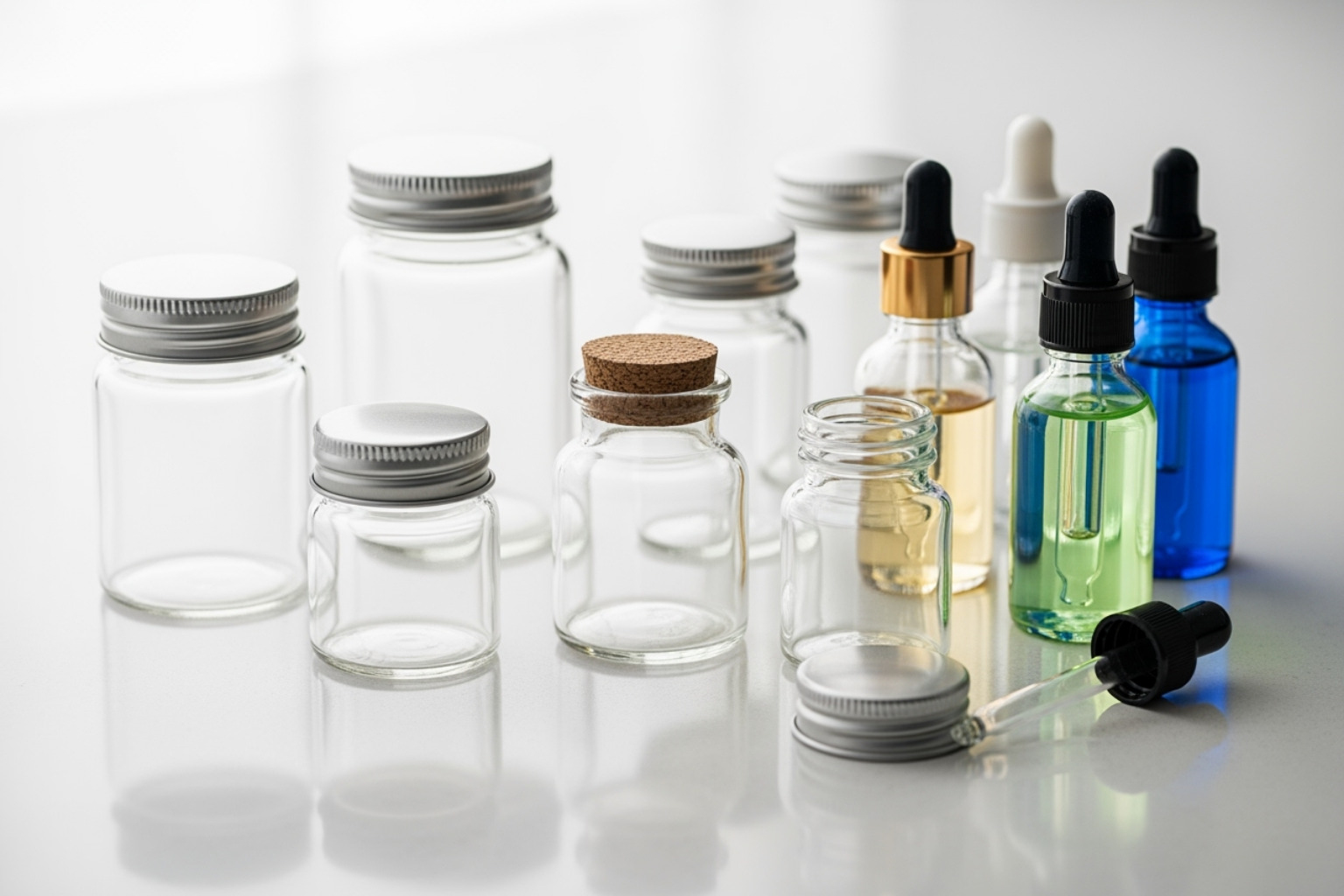
Creating your own DIY natural beauty products is rewarding, but safety is essential for keeping your skin healthy and happy. Think of it as the foundation that lets you enjoy your homemade creations without worry.
The golden rule of homemade skincare? Always patch test first. I can’t stress this enough! Even the gentlest natural ingredients can cause reactions in some people. Apply a small dab of your new creation behind your ear or on your inner forearm, then wait 24 to 48 hours. If you notice any redness, itching, or irritation, skip that recipe.
Cleanliness is your best friend when making beauty products at home. Unlike store-bought products with powerful preservatives, our fresh creations are vulnerable to bacteria. Before you start mixing, wash your hands thoroughly and sterilize all your tools and containers. Glass jars and bottles work best because they’re non-porous and easy to clean. You can sterilize them by washing in hot, soapy water, then either running them through a hot dishwasher cycle or baking them in a 250 degrees F oven for 10-15 minutes.
Understanding shelf life is crucial for safe DIY skincare. Water-based products like toners and fresh masks are the most fragile – they typically last only a few days to a week, even when refrigerated. These products are breeding grounds for bacteria. Oil-based creations like body scrubs and serums are much more stable, often lasting several weeks to months when stored properly in dark containers away from heat and light.
Your refrigerator becomes a skincare ally for extending product freshness. Most homemade beauty products benefit from cool storage, and there’s something luxurious about applying a chilled face mask or toner!
Trust your instincts when checking for spoilage. If something looks, smells, or feels different than when you made it, don’t risk it. Changes in color, unusual odors, or any signs of mold mean it’s time to toss that product and start fresh.
While natural ingredients are generally safer, some popular DIY ingredients can harm your skin. Pure lemon juice and apple cider vinegar can have inconsistent pH levels that may cause chemical burns and make your skin extremely sensitive to sunlight. Baking soda is another troublemaker – its high alkalinity disrupts your skin’s natural protective barrier, leading to dryness and irritation.
When it comes to physical scrubs, gentle is the way to go. Coarse ingredients like rough salt or coffee grounds can create tiny tears in your skin, especially on your face. Stick with fine sugar or finely ground oats for safe exfoliation.
The Michigan State University research on cosmetic preservatives reminds us that preservatives exist “to prevent the growth of harmful bacteria and mold.” While we’re creating preservative-free products, understanding this helps us make informed decisions about storage and usage.
By following these safety guidelines, you can confidently explore the wonderful world of DIY natural beauty while keeping your skin safe and healthy.
Frequently Asked Questions about DIY Natural Beauty
As you start your DIY natural beauty adventure, you’re bound to have questions. After years of experimenting, we’ve gathered the most common concerns that arise when people first start mixing their own beauty potions.
How long do homemade beauty products last?
This is a crucial question. The answer isn’t as straightforward as a store-bought expiration date, but understanding the basics will keep your skin safe and your creations effective.
Water-based products spoil the fastest. Without preservatives, anything containing water becomes a playground for bacteria within just a few days. We’ve learned this lesson the hard way – that lovely rose water mist that smelled divine on Monday can turn into something questionable by Friday.
If you’re making water-based products, treat them like fresh food. Store them in the refrigerator, use them within a week maximum, and trust your nose. Any funky smells or color changes mean it’s time to say goodbye.
Oil-based products are your friends for longevity. Since bacteria need water to thrive, your coconut oil body scrubs and jojoba oil serums will last much longer – typically several weeks to a few months. The key is using stable oils and storing them properly in dark glass containers away from heat and sunlight.
We’ve found that adding a few drops of vitamin E oil to our oil-based creations helps prevent them from going rancid. It’s like giving your homemade products a little insurance policy!
Dry formulations last the longest because moisture is what causes trouble. Your clay mask powders and dry scrub mixes can last for months when stored in airtight containers. Just remember – once you add water to activate them, use them immediately.
Are there any risks with DIY skincare?
Yes, there are some risks, but don’t let that scare you. Like cooking, a mindful approach to safety is all that’s needed for DIY natural beauty.
Allergic reactions can happen with natural ingredients too. We can’t stress this enough: just because something is natural doesn’t mean it’s safe for everyone. Honey, essential oils, and even oats can trigger reactions in sensitive individuals. This is why we always recommend patch testing every single new creation.
Apply a small amount to your inner wrist or behind your ear, wait 24-48 hours, and see how your skin responds. A two-minute patch test can save you from days of dealing with an angry, irritated face.
Bacterial contamination is the sneaky villain in homemade skincare. Without proper sterilization of your tools and containers, you might accidentally create a bacterial breeding ground. We always wash everything in hot, soapy water and use glass containers whenever possible.
Some popular DIY ingredients can actually harm your skin. We’ve seen countless online recipes calling for pure lemon juice or baking soda, but these can cause serious damage. Lemon juice can make your skin extremely sensitive to sunlight, potentially causing burns or dark spots. Baking soda’s high pH can strip your skin’s natural protective barrier, leaving it vulnerable and irritated.
When in doubt, research thoroughly or stick to gentler, proven ingredients like the ones we’ve shared.
Can I sell my DIY beauty products?
Turning your passion into profit is an exciting dream, and it’s possible. Many beauty empires started in a kitchen, but it requires a serious look at the complexities involved.
Selling cosmetics is incredibly complex and comes with significant legal responsibilities. We’re talking about regulations from government agencies, product liability insurance, stability testing, and manufacturing standards that go far beyond what’s needed for personal use.
You’ll need to understand labeling requirements, ingredient restrictions, and safety testing protocols. Every country has different rules, and the paperwork can be overwhelming. Plus, you’ll need professional-grade testing to ensure your products remain stable and safe.
We always recommend starting as a hobby first. Make products for yourself, family, and friends. Get comfortable with formulating, understand how ingredients behave, and build your knowledge base. This foundation is crucial before considering the leap to commercial production.
If you do decide to explore selling, invest time in serious research. Consider taking courses in cosmetic formulation, understand your local regulations, and perhaps consult with other small beauty business owners who’ve steerd this path successfully.
There’s nothing wrong with keeping DIY natural beauty as a personal passion project. The joy of creating something effective with your own hands is reward enough for many of us!
Conclusion: Accept Your Natural Glow
Your journey into DIY natural beauty is about more than mixing ingredients in your kitchen. It’s about taking control of what touches your skin, making choices that align with your values, and finding the power within simple, natural ingredients.
Throughout this guide, we’ve explored how everyday items like oatmeal, honey, and avocado can transform into luxurious treatments that rival expensive spa products. We’ve learned that ingredient transparency isn’t just a buzzword – it’s your right to know exactly what you’re putting on your body. The cost savings alone make this journey worthwhile, but the environmental benefits of reducing waste and the joy of customizing products for your unique skin make it truly rewarding.
Every expert started as a beginner. That first oatmeal and honey mask might feel like a small step, but it’s the beginning of a beautiful relationship with natural skincare. Start simple, stay safe with proper patch testing and storage, and don’t be afraid to experiment as you gain confidence.
The empowerment through creation is real. There’s something magical about whipping up a nourishing hair mask from scratch or creating a body scrub that leaves your skin silky smooth. You’re not just making beauty products – you’re crafting a more mindful, sustainable approach to self-care.
As you continue exploring the wonderful world of natural beauty, Beyond Beauty Lab is here to support your journey. Whether you’re looking for new recipe inspiration or want to deepen your understanding of clean beauty practices, we’re committed to helping you find what works best for your unique needs.
Ready to dive deeper into natural beauty? Explore more natural beauty products and tips and continue nurturing your natural glow with confidence and knowledge.

